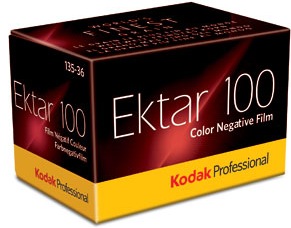Bonjour readers! Keeping on the same vein of ‘Show and Tell’ that I’ve been doing with my posts recently I’ve decided to write about film today. And specifically what works (and what doesn’t) for me. Film is a wonderful thing – different brands (and speeds) will give you different results. I’m always on the lookout to find different films that will give me something else in a shot.
Most of the films I use are colour-process or C41 films. This is because there are heaps of places around that happily process and print these films. Transparency (E-6) or Black and White films are usually processed in big regional centres and cities nowadays. Even with the fact that E-6 and Black and white film is a bit harder (and costlier) to process, the results most certainly make up for it.
So without gilding the Lily any further, I present you with the two best C41 films that I reckon are out there today.
Colour (C41): Kodak Ektar 100 (in 35mm and 120)

I’m not a fan of colour print/negative film overall. The colours aren’t what I perceive them to be, and they often seem murky. But in saying that when you get a good colour shot it looks really good. And from the film that I’ve use my favourite is Kodak Ektar 100. This stuff is reported to provide you with super saturated and fine grained shots. And it does that really well (although you usually need to do some level adjusting when you scan – it’s notorious for being a bit of a bugger in that respect). I’ve used both the 35mm and the 120 roll film of Ektar and it is pretty snazzy. All in all I reckon it’s the best colour negative film out there.





Above: Only the picture of the church had some colour level adjustment (it looked very blue because of underexposure, but I still salvaged it). Everything else is the same as it was off the negative.
C41 Black and White: Ilford XP2 Super 400 (in 35mm and 120)

Now there are some of you out there that are thinking ‘Hold on, he’s gone mad. You can’t have a colour process black and white film!’. Well the cool thing is that you can. There are currently two colour process black and white films on the market today (that I am aware of), and this is the best. In fact it’s the only black and white film I use in my 35mm cameras – if you have a squiz at my Flickr page you’ll see that I like to use it and it gives awesome shots. The 400 speed that it has is really good for low light shooting too, but this film is so forgiving that you can shoot it from ASA/ISO100 to 1600 with very few issues. For the finest grain Ilford recommend shooting it at 200, which gives a more exposed shot (but that shouldn’t matter if you’re scanning because you simply alter the levels to give clear, crisp shots). I’ve currently got a roll set at 500ASA in my 35CC, and I can’t wait to see how it goes (especially with the contrasty Yashica lens).
Other films I’ve used:
Kodak Portra 160VC: So far the results are pretty poor. I took the first few rolls in cloudy weather and the shots came out murky and not vivid (as it is supposed to be). I’ve got a few rolls in some cameras at the moment and the weather is a lot clearer. I’ve got high hopes (and standards) for this film.
Kodak Gold 400: A good film, but I still prefer Ektar. If you need a fast colour film get this one. Plus it’s cheap and easy to get which is a bonus.
Fuji Velvia 50: I’ve taken one roll of this in 120 format, and haven’t sent it to get processed. It’s E-6, and reported to be the best colour film ever. I’ll tell you how it went when I get it developed.
Fuji Velvia 100: As per Velvia 50, but in 35mm. .
Efke R25: A Croatian 120 format film that uses a really old silver-rich recipe for the emulsion. Supposedly really good. I’ve exposed a roll, and sending it up with the Velvia and the other 120 rolls.
A final note:
Film is expensive – many of the ones I shoot with cost around AU$10 a roll. Processing varies from $7 (for C41 develop and prints) to $10 (E-6 and B&W developing), and you add around $10 more per roll to get them scanned. But despite this it’s a wonderful thing to use, and the image is a lot more detailed than 99% of the digital photos out there.
Another final note:
These are the films that I like. You may find them to be useless. The best way to find your favourite is to test them out.













